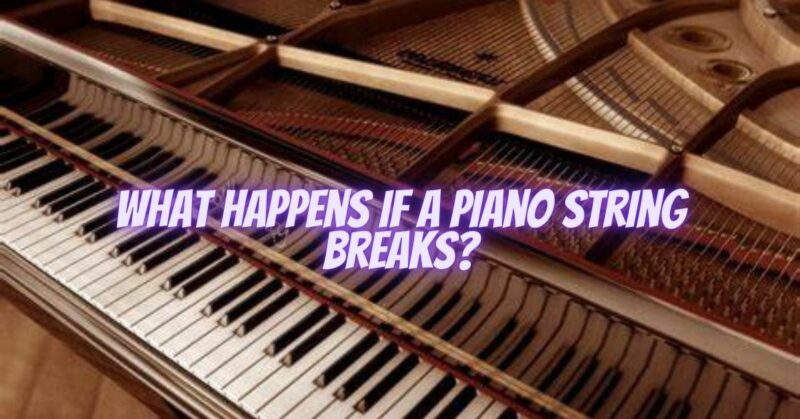A piano string is a vital component of the instrument, contributing to its unique sound and tonal quality. When a piano string breaks, it can have several consequences that affect the piano’s playability, sound production, and overall performance. In this article, we will explore what happens when a piano string breaks and discuss the implications and potential resolutions.
- Loss of Sound: When a piano string breaks, the corresponding note will no longer produce sound. This loss can disrupt the tonal balance and harmonic interaction within the instrument, resulting in an incomplete or altered sound.
- Altered Harmonic Content: Piano strings interact with one another to create harmonic resonance, contributing to the richness and complexity of the sound. When a string breaks, the harmonic content associated with that specific note is compromised, potentially affecting the overall tonal quality and blending of notes.
- Unbalanced Key Response: A broken string can cause an imbalance in the keyboard’s touch and response. The affected key may feel different compared to others, with reduced or uneven resistance. This inconsistency can impact a pianist’s ability to control dynamics, expression, and overall playing experience.
- Potential Damage to Surrounding Components: In some cases, a broken piano string may cause collateral damage to surrounding components. The sudden release of tension can cause stress on neighboring strings, bridge pins, or other structural elements. It is essential to address the broken string promptly to prevent further damage.
Resolutions for a Broken Piano String:
- String Replacement: The most effective solution for a broken piano string is to have it replaced. A qualified piano technician can assess the specific string, select the appropriate replacement, install it correctly, and tune the piano to restore its original sound and functionality.
- Temporary Silence or Mute: If immediate replacement is not possible, you can temporarily silence the note associated with the broken string by placing a felt or foam mute between the hammer and the string. This option allows you to continue playing the piano while minimizing the disruptive effect of the broken string.
- Complete String Replacement: In some cases, particularly if the piano is older or if multiple strings are broken, it may be necessary to consider a complete string replacement or even restringing the entire piano. This comprehensive approach ensures uniform sound quality and optimal performance across the instrument.
Conclusion: When a piano string breaks, it affects the instrument’s sound production, tonal balance, and key response. Addressing a broken piano string promptly is essential to maintain the piano’s intended sound and playability. Replacing the broken string, whether individually or as part of a larger restringing process, is the most effective solution. Temporary silencing or muting of the affected note can be a temporary measure until proper replacement can be arranged. Seeking the assistance of a qualified piano technician is recommended to ensure accurate diagnosis, appropriate string selection, and proper installation. By addressing a broken piano string promptly, you can restore the instrument’s sound, performance, and overall enjoyment.


